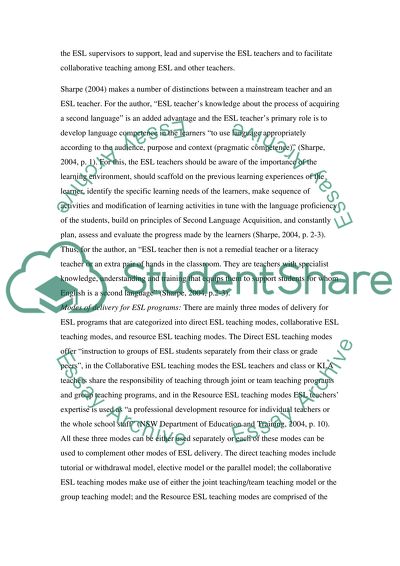Cite this document
(“Teaching English as a Second Language: Role of the ESL Teacher Essay”, n.d.)
Teaching English as a Second Language: Role of the ESL Teacher Essay. Retrieved from https://studentshare.org/education/1564067-teaching-english-as-a-second-language-role-of-the-esl-teacher
Teaching English as a Second Language: Role of the ESL Teacher Essay. Retrieved from https://studentshare.org/education/1564067-teaching-english-as-a-second-language-role-of-the-esl-teacher
(Teaching English As a Second Language: Role of the ESL Teacher Essay)
Teaching English As a Second Language: Role of the ESL Teacher Essay. https://studentshare.org/education/1564067-teaching-english-as-a-second-language-role-of-the-esl-teacher.
Teaching English As a Second Language: Role of the ESL Teacher Essay. https://studentshare.org/education/1564067-teaching-english-as-a-second-language-role-of-the-esl-teacher.
“Teaching English As a Second Language: Role of the ESL Teacher Essay”, n.d. https://studentshare.org/education/1564067-teaching-english-as-a-second-language-role-of-the-esl-teacher.


